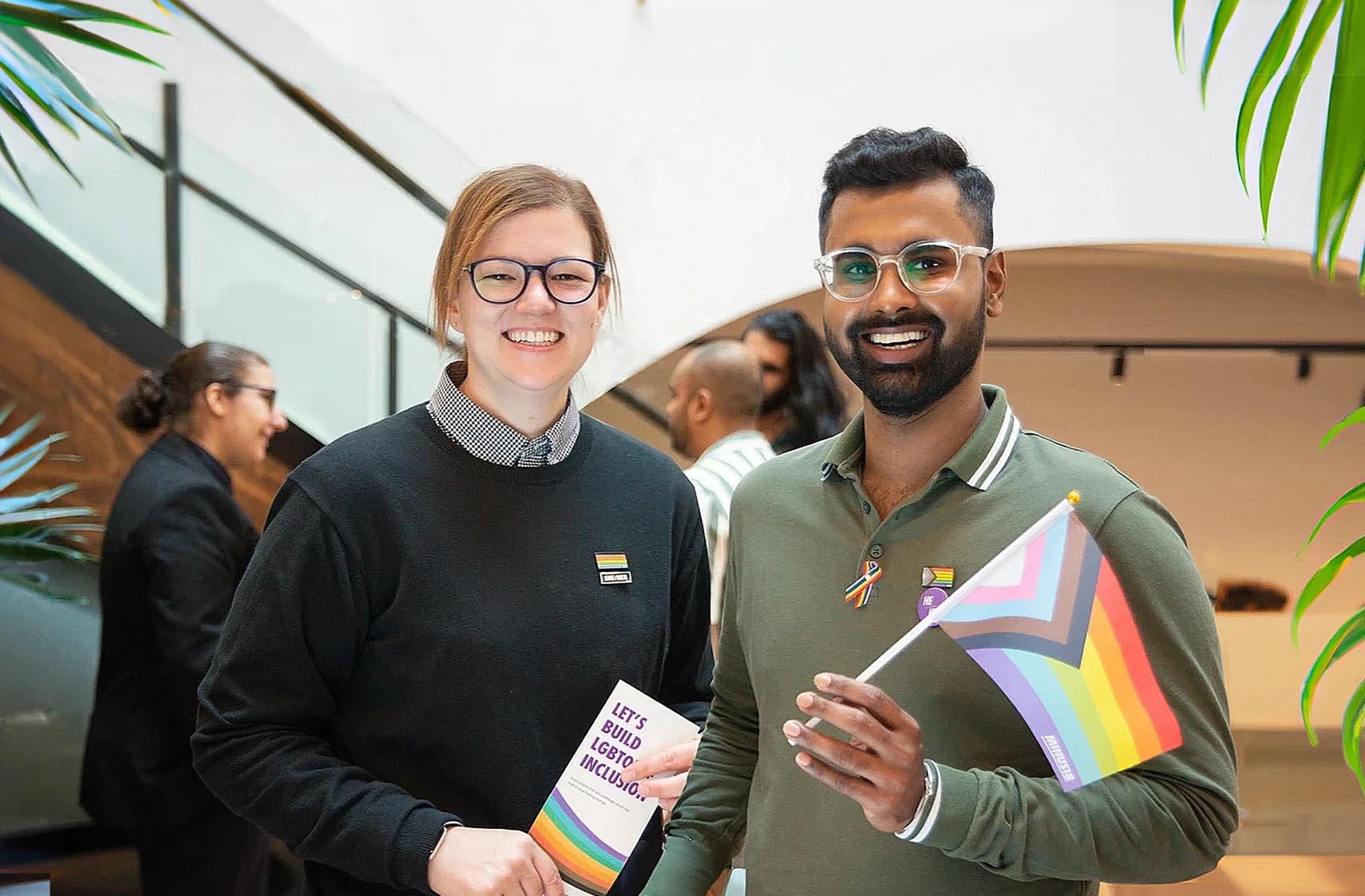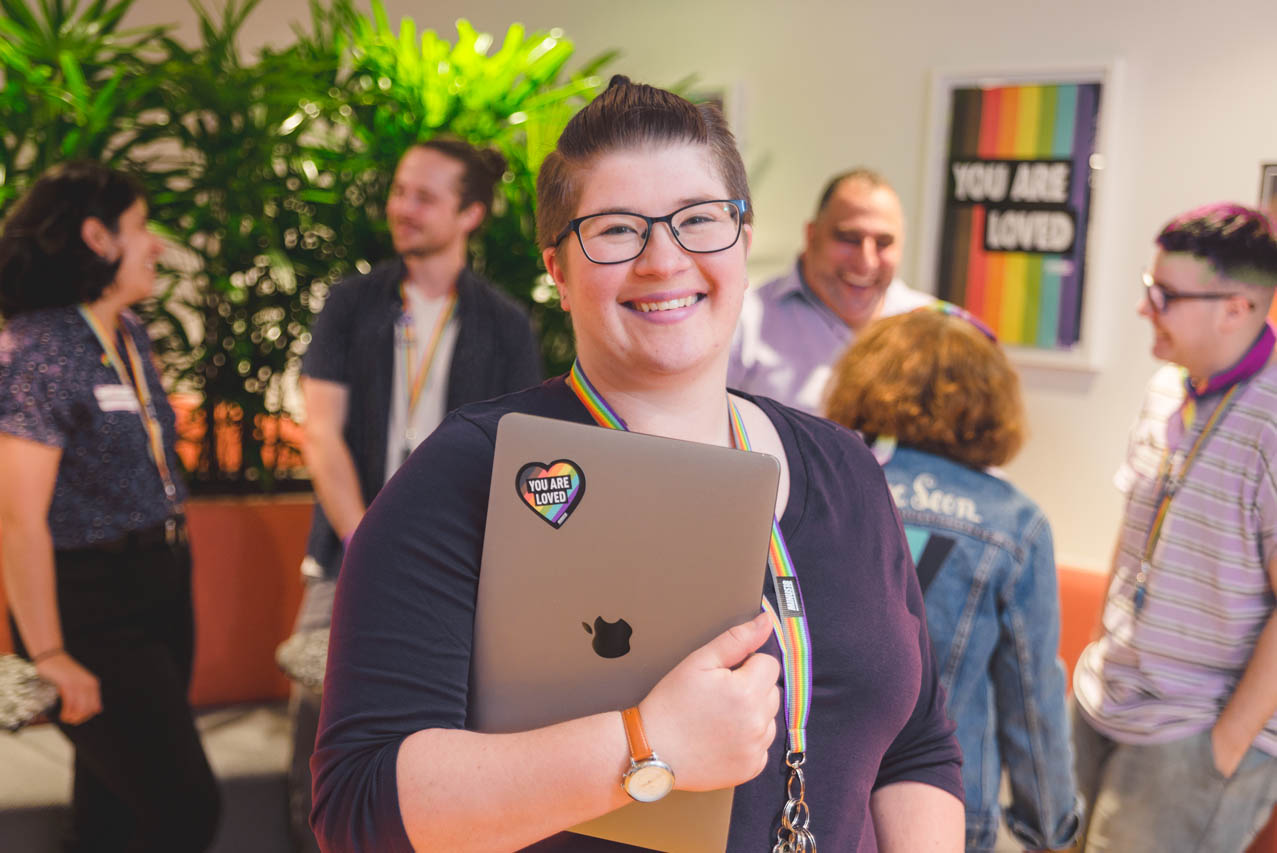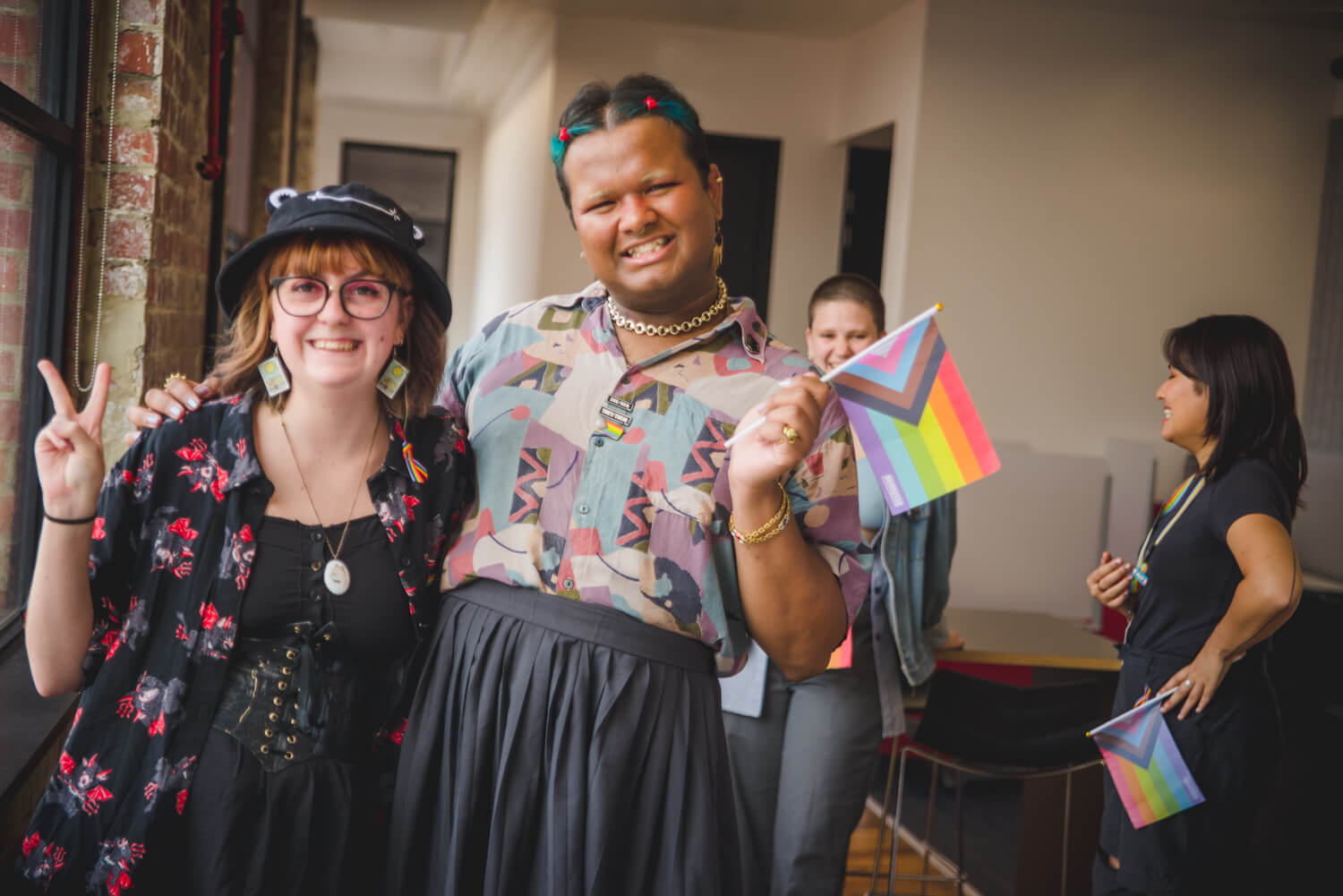
How to Respond When Someone Comes Out to You
November 24, 2022
Coming out is the process of a person sharing their Lesbian, Gay, Bisexual, Trans, Queer, Intersex, Asexual or more (LGBTQIA+) identity.
There are lots of different ways coming out can look. For some, the process might include a build up towards a moment of fanfare or big announcement. For others it might be more casual, like mentioning it in passing. Some people might decide not to share their identity at all, which is completely valid too.
Coming out is a personal and often continuous journey that looks different for everyone.
Why it's Important to Talk About
If sexuality or gender identity is new to you, then it might feel strange to think about discussing them - especially in the workplace. After all, aren't these topics private? However, these parts of ourselves come up regularly in every day interactions for all of us, even if we don't regularly think about them.
- We share our sexuality when we talk about spending the weekend with our wife, or by simply wearing a wedding ring.
- We might be sharing our gender identity through the bathrooms we access or the pronouns we use.
LGBTQIA+ people often feel the need to hide these parts of who they are as a safety mechanism to avoid disrimination, an experience people who are not LGBTQIA+ may not need to think about.
In Australia:
- 68% of LGBTQIA+ employees aren’t out to everyone at work. (1)
- 64% of LGBTQIA+ students aren’t out to any of their teachers. (2)
Here are some simple steps you can take when someone comes out to you, and you are sensing that they would like your support:

1. Affirm
“I really appreciate you telling me! Thank you for trusting me.”
When someone comes out to you, the best response is often “Thank you for telling me!” and affirming to them that your relationship is not negatively impacted by the news.
If you’re unsure of how to react you can mirror the way in which the person has shared the news with you. If they’ve shared it casually, it’s okay to be casual in return.
As supportive as you might be, never pressure anyone to come out or share their identity. Not everyone wants to or is able to do so safely – it’s up to them.

2. Support
“Is this something you’d like to keep between us, or is it okay to share with others?”
Many LGBTQIA+ people experience discrimination or bullying due to their identity, which can cause challenges in school, work, family, and everyday life.
This isn’t the case for everyone. Listen and respond to their individual experience, keeping their identity confidential unless you have permission to share it.
If the person seems unhappy or comes out to you privately, offer your support without assuming that they need it.
Know your limits and suggest outside help. Qlife is a free support service you can share for anyone in Australia wanting to discuss sexuality, gender, feelings or relationships – online or by phone.

3. Learn
“Some of what you’ve shared is new to me. I’m going to learn more about it.”
There’s a wide variety of experiences and identities within the LGBTQIA+ community – no two people are the same! Learning about identity and inclusion means you’ll be better prepared to offer your support to others.
Do your own learning rather than expecting someone to teach you about their own identity. Information is available online and through professional development.
Start learning now! Don’t wait for someone to come out before you begin learning about LGBTQIA+ identity and inclusion.
Remember, You're Not Alone
Building spaces where LGBTQIA+ people feel safe and included isn’t something you have to do alone. We can help, no matter where you are on your LGBTQIA+ inclusion journey.
Sources:
(1) Diversity Council Australia: Out At Work (2018), (2) La Trobe University: Writing Themselves in 4 (2021)
Related Articles

Much of our language reinforces outdated gender binaries. Here are some gender neutral alternatives for daily use.

Being an ally to the LGBTQIA+ community might seem like a big task. Here's where to start.

Building LGBTQIA+ inclusion at work grows closer, more effective teams.

Ways to build LGBTQIA+ inclusion for students and teachers.